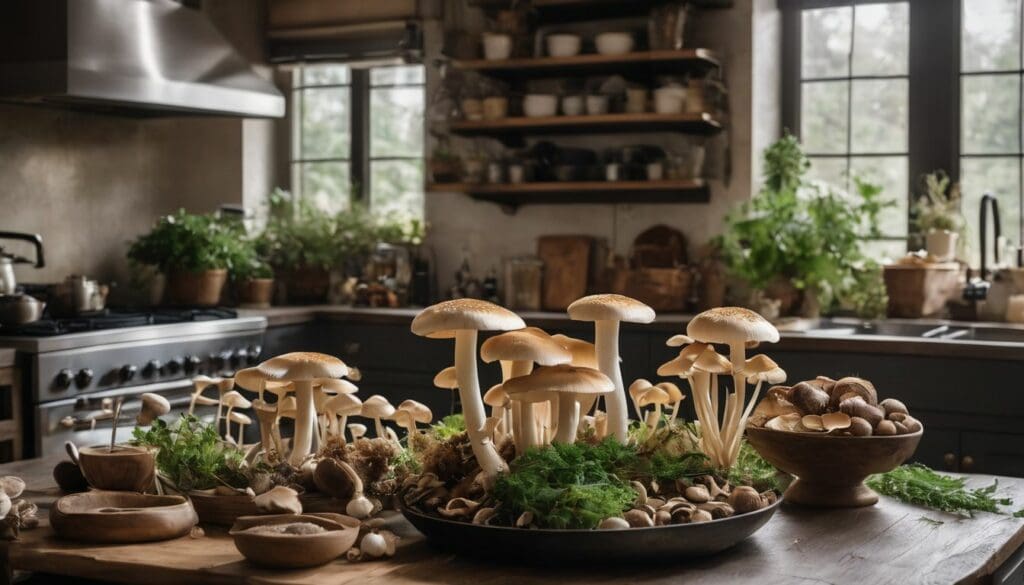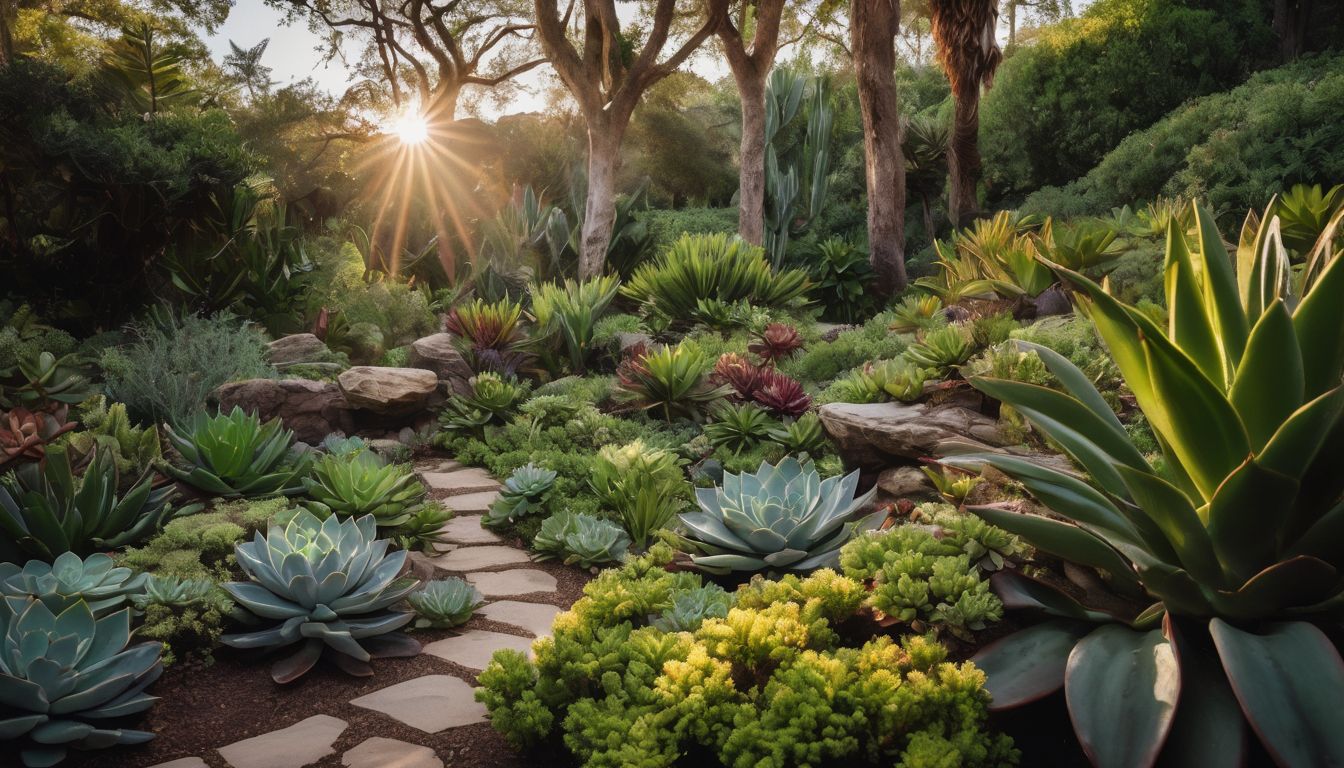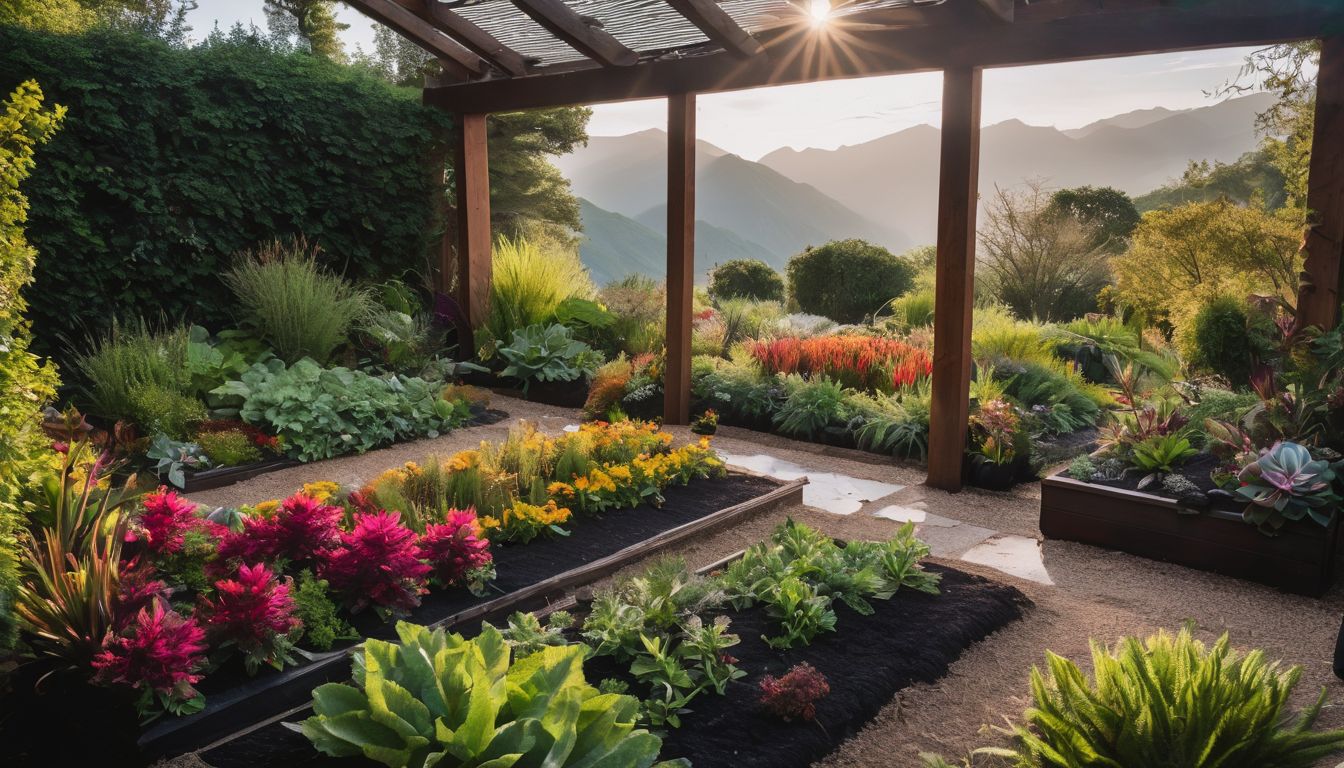Are you tired of buying expensive, flavorless mushrooms from the grocery store? Did you know that growing your own culinary mushrooms at home is not only cost-effective but also environmentally friendly? In this article, we will explore the benefits of cultivating and using your own mushrooms, as well as provide tips on how to successfully grow and cook with them. Get ready to discover the joy of homegrown mushrooms!
Key Takeaways
- Growing mushrooms at home is cost – effective, reduces environmental impact and allows for the control of quality and variety.
- Various mushrooms such as King Oyster, Shiitake, and Lion’s Mane can be cultivated with methods like using a compost bin or buckets suited to different living spaces.
- Homegrown mushrooms should be harvested gently, cleaned without washing in water, stored properly and can enhance meals through fresh flavours in cooking.
The growing popularity of growing and using culinary mushrooms at home
Home mushroom growing has taken root among environmentally conscious individuals keen on sustainability and organic produce. By cultivating gourmet mushrooms in their own space, they tap into a world of fresh flavours while reducing food miles and packaging waste.
People discover the delights of shiitake, oyster, and lion’s mane fungi right from their kitchens or gardens.
These DIY mycologists enjoy not only the process but also the added perk of knowing exactly where their food comes from. They control the cultivation conditions ensuring no harmful chemicals taint their harvest.
The trend towards small-scale mushroom production reflects a larger shift toward self-sufficiency and ecological responsibility in our daily diets.
Benefits of Growing and Using Culinary Mushrooms at Home
Growing and using culinary mushrooms at home offers the benefit of fresh and flavorful mushrooms, cost-effectiveness, sustainability, and control over quality and variety. It’s a popular choice for environmentally conscious individuals looking to support conservation efforts.
Fresh and flavorful mushrooms
By cultivating culinary mushrooms at home, you tap into a source of rich and robust flavours that can’t be matched by store-bought varieties. These homegrown fungi offer tastes that are more pronounced and aromas that thoroughly enhance your cooking.
Imagine slicing into a plump oyster mushroom and experiencing its earthy depth or adding hand-picked shiitake to your stir fry for an umami-packed punch. Each variety brings its unique essence to the table, making even simple recipes stand out.
Harvesting mushrooms right from your indoor cultivation ensures peak freshness, so you’re guaranteed top-notch ingredients for every dish. Your kitchen becomes a gourmet hub with the addition of just-picked enoki in salads or king oysters seared to perfection.
Without leaving the comfort of your own space, you have continuous access to organic produce free from pesticides and long storage periods which often diminish flavour. This approach transforms meals into memorable dining experiences packed with natural taste straight from the source—your very own sustainable mushroom cultivation setup.
Cost effective
Growing and using culinary mushrooms at home is a cost-effective way to enjoy fresh and flavorful produce without breaking the bank. By cultivating edible mushrooms indoors, you can reduce your reliance on store-bought options while saving money in the long run.
This sustainable practice not only benefits your wallet but also supports conservation efforts by reducing carbon emissions associated with transportation and packaging. Additionally, cultivating edible mushrooms at home allows you to have control over the quality and variety of your produce, ensuring that you always have access to high-quality ingredients for cooking delicious mushroom recipes.
By growing and using culinary mushrooms at home, individuals can enjoy cost-effective, sustainable, and environmentally friendly produce that adds depth of flavor to various dishes.
Sustainable and environmentally friendly
Sustainable and environmentally friendly, growing mushrooms at home reduces the environmental impact of commercial agriculture. By using organic methods and recycling waste materials as a growing medium, home cultivators contribute to conservation efforts.
Using sustainable practices such as reusing mushroom spawn and repurposing growing containers supports a greener lifestyle.
Choosing to cultivate gourmet mushrooms at home promotes small-scale, local food production and reduces carbon emissions associated with transporting produce. Additionally, mushroom cultivation utilises agricultural by-products like coffee grounds or straw that would otherwise go to waste, making it an environmentally responsible choice for conscious individuals seeking sustainable living alternatives.
Control over quality and variety
When growing and using culinary mushrooms at home, you have complete control over the quality and variety of your harvest. You can select the specific types of mushrooms you want to grow, ensuring a diverse range of flavors and textures for your cooking.
Additionally, by cultivating mushrooms at home, you have the assurance that they are grown in an environmentally friendly and sustainable manner, promoting conservation efforts while enjoying high-quality produce.
Choosing to grow your own edible mushrooms empowers you to ensure that they are free from harmful chemicals and pesticides. This level of quality control guarantees that you are consuming fresh and nutritious fungi that align with your environmental values.
Types of Mushrooms to Grow at Home
For those interested in growing mushrooms at home, there are various types to consider such as King Oyster, Pink Oyster, Yellow Oyster, Lion’s Mane, Maitake, Enoki, Shiitake and Reishi.
Each variety offers unique flavors and textures for culinary use.
King Oyster
King Oyster mushrooms are a popular variety for home cultivation due to their robust texture and savoury flavour. These mushrooms, also known as king trumpet or French horn mushrooms, thrive in low light conditions and can be grown indoors with relative ease.
King Oysters have a thick stem and small cap, making them versatile for cooking in various dishes such as stir-fries, soups, and grilling. With their rich umami taste, they are an excellent meat substitute for vegetarian and vegan meals.
Cultivating King Oyster mushrooms at home allows individuals to enjoy fresh produce while reducing environmental impact through sustainable farming practices.
The King Oyster mushroom’s ability to grow on simple substrates like sawdust or straw presents an opportunity for eco-conscious individuals to minimise waste by using recycled materials as a growing medium.
Pink Oyster
Pink oyster mushrooms are a vibrant and visually striking variety that adds a pop of color to your indoor mushroom cultivation. Their bright pink hue makes them an attractive choice for environmentally conscious individuals looking to grow gourmet mushrooms at home.
With their mild, seafood-like flavor, pink oysters are versatile in various recipes and can be easily incorporated into everyday cooking. These mushrooms thrive in warm, humid conditions and are relatively low-maintenance, making them an ideal option for small-scale mushroom production.
When considering the range of edible mushrooms to cultivate at home, pink oysters stand out as an eye-catching and delectable addition to any urban mushroom cultivation setup.
Yellow Oyster
To transition from the Pink Oyster to the Yellow Oyster, let’s explore another visually striking and flavourful mushroom variety that you can grow at home – the Yellow Oyster. Known for its bright yellow colour and delicate, slightly fruity flavour, the Yellow Oyster is a popular choice for both culinary and aesthetic purposes.
This vibrant mushroom adds a pop of colour to dishes and grows in beautiful cascading clusters, making it an attractive addition to any indoor or outdoor mushroom garden. With its mild yet distinctive taste, the Yellow Oyster is versatile in cooking applications, adding depth of flavour to stir-fries, soups, pasta dishes, and more.
When cultivating this gourmet edible fungus at home, ensure an environment with consistent air circulation and high humidity levels around 90%. The ideal temperature range for growing Yellow Oysters is between 65-75°F (18-24°C).
These mushrooms thrive on a substrate made of pasteurised straw or sawdust supplemented with wheat bran or other nitrogen-rich materials. Kept moist but not waterlogged during their growth cycle enhances their yield potential.
Lion’s Mane
Lion’s Mane mushrooms, scientifically known as Hericium erinaceus, boast a unique appearance with cascading white spines that resemble the mane of a lion. This variety is not only visually striking but also offers a meaty texture and seafood-like taste when cooked, making it a versatile option for various recipes.
In addition to its culinary appeal, Lion’s Mane mushrooms have shown promising health benefits, including potential neuroprotective properties and support for cognitive function.
As an environmentally conscious individual interested in sustainable food choices, adding Lion’s Mane to your home mushroom cultivation can be an exciting way to explore new flavors while supporting conservation efforts.
Maitake
Maitake, also known as hen-of-the-woods, is a popular mushroom to grow at home due to its rich, earthy flavour and numerous health benefits. It contains essential nutrients and bioactive compounds that support immune function and overall well-being.
Growing maitake mushrooms at home allows for a fresh supply of this prized ingredient while reducing the need for commercially grown produce. By cultivating maitake mushrooms in an environmentally friendly way, individuals can enjoy sustainable and cost-effective access to these nutritious fungi.
Known for their distinct frilly appearance and robust umami flavour, Maitake mushrooms are a versatile addition to various dishes, from stir-fries to soups. Their unique texture adds depth to recipes while providing valuable nutritional content.
Enoki
Enoki mushrooms, also known as Enokitake, are delicate and slender with long stems and tiny white caps. They have a mild, slightly fruity flavor and a crunchy texture, making them popular in salads and Asian dishes.
Enoki mushrooms are easy to grow at home using sawdust or straw as a growing medium. They thrive in cool temperatures and require minimal light, making them ideal for indoor cultivation.
When cultivating Enoki mushrooms at home, ensure proper ventilation to prevent moisture buildup.
Enoki mushrooms belong to the oyster mushroom family and are rich in nutrients such as B vitamins, fiber, potassium, and antioxidants. Additionally, they contain bioactive compounds that may support immune function and overall health.
Shiitake
Shiitake mushrooms are a popular choice for home cultivation due to their rich, savory flavor and numerous health benefits. They can be grown on logs or sawdust blocks, making them versatile for small-scale mushroom production.
Shiitake mushrooms require a humid environment with good air circulation and indirect light to grow successfully at home. Harvesting is best done when the caps have fully opened but before they begin to flatten out, ensuring peak flavor and texture for cooking.
Next up: “Reishi” – A Unique Mushroom Variety
Reishi
Reishi mushrooms, also known as Ganoderma lucidum, are highly valued for their potential health benefits and adaptogenic properties. Cultivating Reishi at home allows you to access its medicinal qualities conveniently.
This versatile mushroom can be used in teas, tinctures, or powders to support overall well-being.
Rich in antioxidants and immune-boosting compounds, Reishi is believed to have anti-inflammatory and stress-reducing effects. Growing Reishi at home enables you to harness these valuable properties while having control over the cultivation process.
Methods for Growing Mushrooms at Home
You can grow mushrooms at home using different methods such as an indoor compost bin, box kit, bucket, or logs. Each method has its own unique advantages and requirements for successful mushroom cultivation.
Indoor compost bin
An indoor compost bin is an ideal method for growing mushrooms at home. It provides a controlled environment for mushroom cultivation and helps in reducing organic waste. By utilising kitchen scraps and other biodegradable materials, you can produce nutrient-rich compost to support the growth of your mushrooms.
Simply layer the compost with mushroom spawn and maintain proper moisture levels to facilitate their growth. This sustainable approach not only yields fresh, flavourful mushrooms but also contributes to environmental conservation by reducing food waste.
The indoor compost bin allows you to actively participate in sustainable practices while enjoying the benefits of homegrown culinary mushrooms. Its simplicity and eco-friendly nature make it an appealing option for environmentally conscious individuals interested in small-scale mushroom production without compromising on quality or taste.
Box kit
If an indoor compost bin sounds too involved, consider a box kit for growing mushrooms at home. Box kits are convenient and come with everything you need to get started, including substrate and mushroom spawn.
They require minimal maintenance and can be placed almost anywhere in your home. When using a box kit, simply follow the instructions provided, ensuring regular misting and proper ventilation for optimal growth.
By providing an ideal environment for your chosen mushroom variety, a box kit offers an easy entry point into the world of homegrown culinary mushrooms.
By embracing a box kit for growing mushrooms at home, individuals can experience the joy of harvesting their own fresh produce without needing substantial space or expertise in cultivation techniques.
The simplicity and accessibility of these kits make them particularly appealing to beginners or those looking for a hassle-free option that aligns with sustainable living practices.
Bucket
To grow mushrooms at home, using a bucket is an affordable and simple method. It involves filling the bucket with a suitable growing medium and mushroom spawn. The advantage of using a bucket is its versatility, as it allows for easy control over moisture levels and temperature, essential for successful mushroom growth.
Additionally, buckets are easily accessible and can be used in small spaces, making them ideal for environmentally conscious individuals looking to cultivate their own gourmet mushrooms at home.
When choosing the right type of bucket, ensure that it is made from food-safe material and has drainage holes to prevent water accumulation. This method offers an excellent opportunity to repurpose old buckets or containers, contributing to sustainable practices in home cultivation.
Logs
To grow gourmet mushrooms at home, logs can be a sustainable and cost-effective option. Using hardwood logs such as oak or maple, you can inoculate them with mushroom spawn and keep them in a shaded area with regular moisture.
This method allows for the cultivation of various types of mushrooms, including shiitake and oyster varieties.
Once the logs are fully colonised by mycelium, they can produce multiple harvests over several years. By utilising this natural growing medium, you can enjoy the benefits of fresh and flavoursome mushrooms while contributing to environmental conservation efforts through small-scale mushroom production.
How to Harvest and Cook Homegrown Mushrooms
Once your homegrown mushrooms are ready, learn the best harvesting techniques and cooking ideas to make the most of your fresh harvest. Read on to discover how to enjoy the delicious flavors and health benefits of your homegrown mushrooms!
Harvesting techniques
When harvesting homegrown mushrooms, use a sharp knife to cut the stalk at its base. Gently twist and pull the mushroom off the growing medium. Ensure not to disturb or damage neighbouring mushrooms during the harvest.
After harvesting, brush off any visible dirt from the mushrooms using a soft-bristled brush or a damp cloth. Avoid washing them as they absorb water easily and become slimy. Store freshly harvested mushrooms in a paper bag in the refrigerator for up to one week, allowing air circulation but preventing excess moisture buildup.
Utilise these fresh homegrown mushrooms in your favourite recipes for a delightful culinary experience.
Cleaning and storing mushrooms
After harvesting your homegrown mushrooms, it’s vital to clean them properly before storing. Gently brush off any visible dirt or debris using a soft-bristled brush or a damp paper towel.
Avoid washing them under running water, as mushrooms are like sponges and can absorb excess moisture. Once cleaned, store the mushrooms in a paper bag or a partially open container in the refrigerator.
For longer-term storage, consider drying or freezing the mushrooms to preserve their freshness and flavour for future culinary use.
Cooking ideas and recipes
Enjoy your homegrown mushrooms in a variety of delicious recipes such as creamy mushroom risotto, hearty mushroom soup, flavourful stir-fries, and savoury mushroom stroganoff. Experiment with different cooking methods like roasting, grilling, or sautéing to enhance the natural flavours of your freshly harvested mushrooms.
Try incorporating them into pasta dishes, omelettes, or as a topping for pizzas and burgers for a gourmet touch to your meals.
Explore new flavours and textures by pairing your homegrown mushrooms with herbs like thyme, rosemary, and parsley or adding a splash of balsamic vinegar or soy sauce for depth of flavour.
The possibilities are endless when it comes to cooking with your own organic mushrooms – elevate your culinary creations while reducing environmental impact through sustainable at-home farming.
Tips for Successful Mushroom Growing at Home
Choose a suitable location with proper ventilation and light, maintain consistent moisture levels, and source high-quality spawn for successful mushroom cultivation at home. Avoid common mistakes such as overcrowding or overwatering, and be prepared to troubleshoot any issues that may arise during the growing process.
Choosing the right location
Select a location in your home that provides the ideal conditions for mushroom growth, such as a basement, spare room, or a shaded area in the garden. Ensure that the chosen space has good ventilation to prevent mold and mildew.
Keep the area away from direct sunlight and drafts to maintain consistent temperature and humidity levels essential for successful mushroom cultivation. Creating an environment with stable conditions will encourage healthy mycelium growth and bountiful mushroom harvests.
To ensure an optimal growing location, monitor the temperature and humidity regularly using a thermometer and hygrometer. Maintaining these environmental factors at the appropriate levels will support robust mushroom development while minimising the risk of contamination or stunted growth.
Proper moisture and temperature levels
Maintain consistent moisture levels by lightly misting the growing medium regularly. Check the substrate frequently to ensure it remains evenly damp but not waterlogged. Keep the temperature between 55-75°F to create optimal conditions for mushroom growth.
Avoid direct sunlight and cold draughts, as these can disrupt the delicate environment required for successful cultivation.
Consistently monitoring and adjusting moisture and temperature levels will support healthy mushroom development, allowing you to enjoy a bountiful harvest of homegrown culinary delights.
Sourcing high-quality spawn
When sourcing high-quality spawn for growing your own mushrooms at home, it is crucial to find a reputable supplier. You should look for certified organic spawn to ensure that you are cultivating your mushrooms in an environmentally friendly and sustainable way.
Ensure the supplier offers a variety of mushroom species so you can choose the best options for your taste and cooking preferences. Conduct thorough research in order to make an informed decision about the quality and diversity of the spawn available, helping support conservation efforts through responsible mycology practices.
By choosing reliable suppliers who provide certified organic spawn, you contribute positively towards environmental sustainability while enjoying delicious homegrown mushrooms.
Common mistakes to avoid
When growing mushrooms at home, it is important to avoid overwatering the growing medium. Excess moisture can lead to mold growth and rotting of the mushrooms. Additionally, using contaminated or low-quality spawn can result in poor mushroom yield and compromised quality.
Remember to monitor the temperature of the growing environment as extreme heat or cold can hinder successful mushroom cultivation. Providing inadequate air circulation may also create a breeding ground for unwanted fungi and bacteria, negatively impacting your mushroom harvest.
Ensuring proper hygiene practices in handling equipment and maintaining a clean growing environment are crucial in preventing contamination that could ruin your entire crop. It’s essential not to overlook these common mistakes that could affect the success of your homegrown mushroom cultivation.
Troubleshooting tips
To prevent potential issues with your homegrown mushroom crop, there are several troubleshooting tips to keep in mind. If you notice any signs of mold or discoloration on the mushrooms, promptly remove and dispose of affected areas to prevent further contamination.
Should your mushrooms start showing stunted growth, adjust the temperature and humidity levels within their environment according to the specific requirements for the type of mushroom being grown.
In case of unusual odors emanating from your growing area, check for proper ventilation and ensure that the growing medium is not overly saturated. Additionally, if you encounter pest infestations such as mites or flies, consider implementing natural remedies like neem oil or essential oils to deter these unwanted visitors.
Conclusion
Cultivating and using culinary mushrooms at home offers a rewarding and sustainable way to enjoy fresh, flavorful fungi. With the right techniques, enthusiasts can grow a variety of mushroom types in their own homes.
By following proper methods for growing, harvesting, and cooking homegrown mushrooms, individuals can incorporate these nutritious fungi into their everyday meals. Whether it’s indoors or outdoors, experimenting with different types of mushrooms at home is an enjoyable and eco-friendly pursuit that anyone can undertake.
FAQs
1. How do I start growing edible mushrooms at home?
To start home mushroom growing, you’ll need a suitable mushroom growing medium and some basic DIY mushroom cultivation techniques.
2. What are the benefits of growing gourmet mushrooms myself?
Growing gourmet mushrooms at home gives you fresh fungi for cooking and can be a fun DIY project for small-scale mushroom production.
3. Is it possible to farm mushrooms organically in my own space?
Yes! Organic mushroom growing is quite achievable with the right cultivation techniques, even if you’re only doing mushroom farming on a small scale at home.
4. Can anyone learn the skills needed for successful fungi cultivation?
Absolutely! Anyone interested in cultivating culinary mushrooms can learn the necessary techniques for DIY mushroom growing.
5. After harvesting, how should I use my homegrown mushrooms in cooking?
Cooking with your own harvest of culinary mushrooms allows you to experiment with fresh flavors and add nutritional value to your meals straight from your garden or indoor setup.





